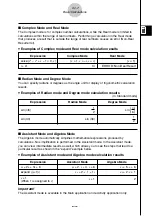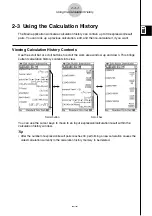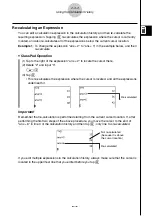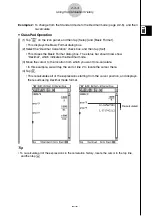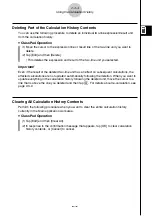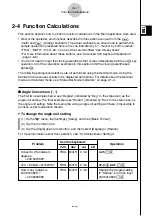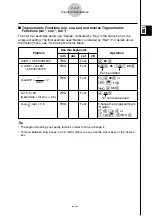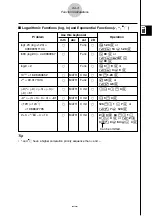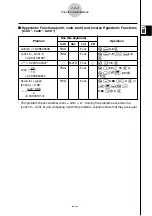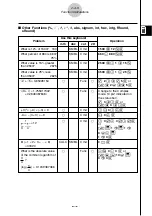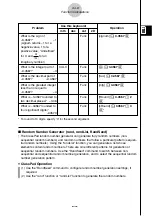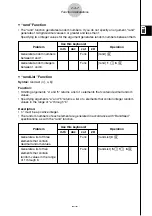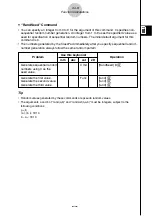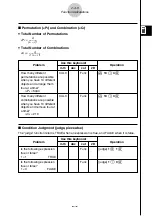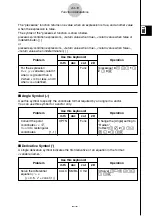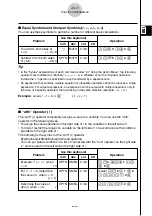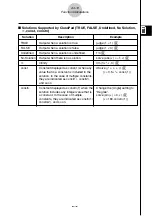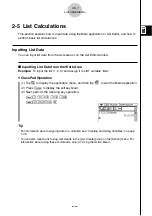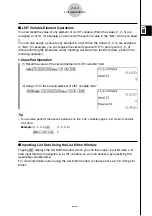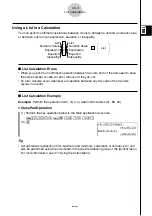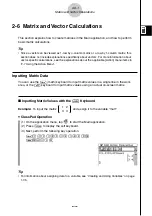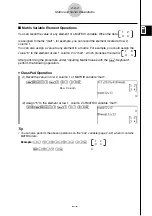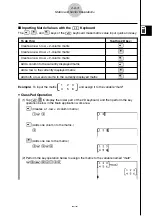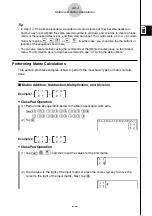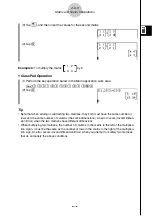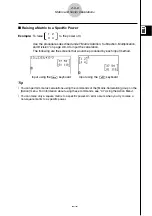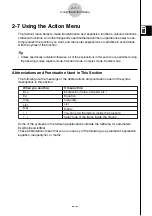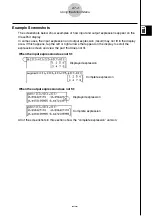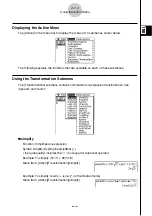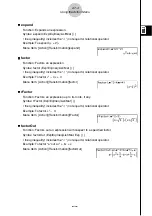
20021201
The “piecewise” function returns one value when an expression is true, and another value
when the expression is false.
The syntax of the “piecewise” function is shown below.
piecewise(<condition expression>, <return value when true>, <return value when false or
indeterminate>[ ) ]
or
piecewise(<condition expression>, <return value when true>, <return value when false>,
<return value when indeterminate>[ ) ]
Problem
Use this keyboard:
Operation
mth
abc
cat
2D
For the expression
Func
[piecewise]
0
X
,
1
,
0 <
x
(
x
= variable), return 1
2
,
0
w
when
x
is greater than 0,
2 when
x
is 0 or less, and 0
when
x
is undefined.
k
Angle Symbol (
∠
)
Use this symbol to specify the coordinate format required by an angle in a vector.
You can use this symbol for a vector only.
Problem
Use this keyboard:
Operation
mth
abc
cat
2D
Convert the polar
OPTN
Func
Change the [Angle] setting to
coordinates
r
= 2,
“Radian”.
θ
=
π
/4 to rectangular
[toRect]
[
9
2
),
coordinates.
[1, 1]
7
/
4
)]
w
k
Derivative Symbol (’)
A single derivative symbol indicates the first derivative of an equation in the format:
<variable name>’.
Problem
Use this keyboard:
Operation
mth
abc
cat
2D
Solve the differential
CALC SMBL
Cmd
[dSolve]
Y
=
X
,
X
equation
y
’ =
x
.
,
Y
w
{
y
= 0.5 ·
x
2
+ const (1)}
2-4-10
Function Calculations

